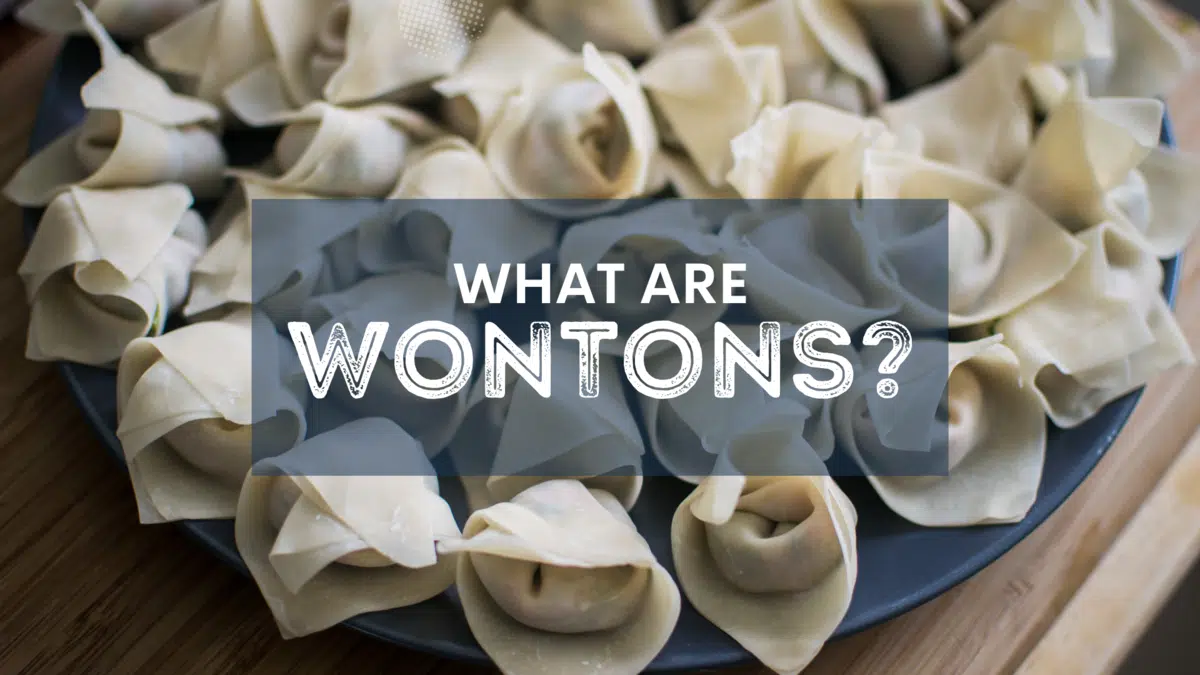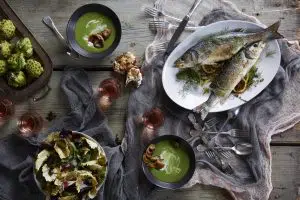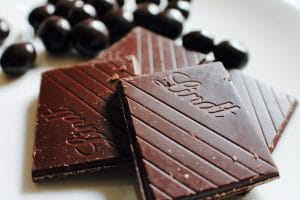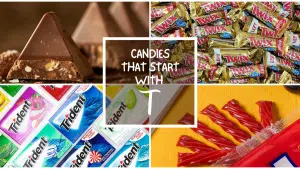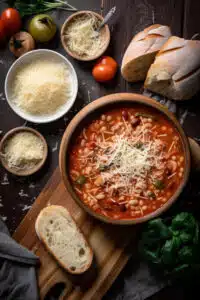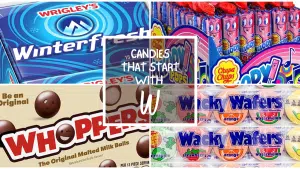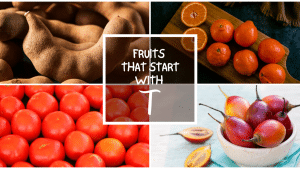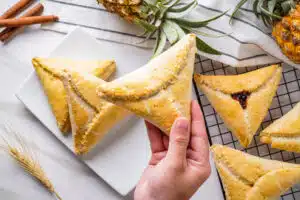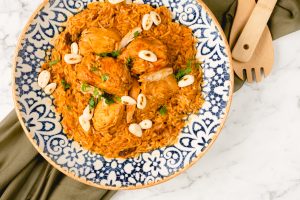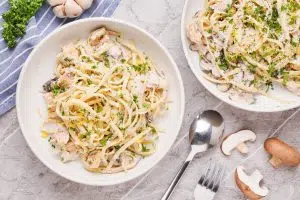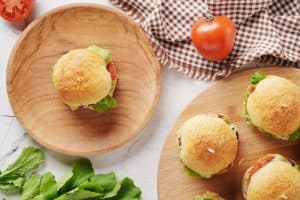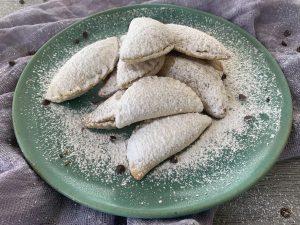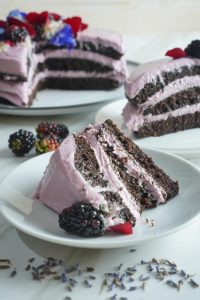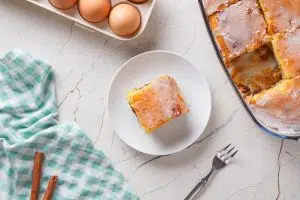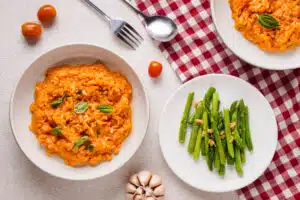What Are Wontons?
Important Note: When you buy through our links, we may earn a commission. As an Amazon Associate we earn from qualifying purchases. Content, pricing, offers and availability are subject to change at any time - more info.
Key Takeaways
- Wontons consist of a filling enclosed in a wonton wrapper and can be molded into various shapes.
- Fillings vary, although pork, shrimp and Chinese vegetables are especially popular.
- They are Chinese in origin and typically served as an appetizer or snack, either with a dipping sauce or in soup.
If you enjoy Chinese food, you must have tried the delicious little bites known as wontons. But what are wontons exactly? Well, they are a kind of Chinese dumpling. Other spellings for these little treats include won ton, wuntun and wanton, which translate to mean ‘swallowing a cloud’ in Cantonese.
- Key Takeaways
- Wontons vs Dumplings: What’s the Difference?
- Popular Fillings for Wontons
- Crab Rangoon Wontons
- How to Store Wontons
- Can You Freeze Wontons?
- How To Serve Them
- How To Store Wonton Wrappers
- Different Types of Wontons in China
- History of Wontons
- Medicinal Wontons
- Wrap Your Wontons Like a Pro
- Wontons FAQ
Wontons vs Dumplings: What’s the Difference?
Many people wonder about the difference between wontons and dumplings. Wontons are typically served in soup or deep-fried, although they can also be steamed or boiled. Dumplings are boiled, steamed or fried on just one side to give them one soft side and one crunchy side.
Dumpling wrappers are thicker than wonton wrappers. Dumplings don’t always contain a filling but, if they do, it’s typically mildly seasoned and the dumplings come with a dipping sauce.

Wontons don’t usually come with sauce because the filling is usually fully seasoning. Finally, dumplings are normally round but wontons can be square, rectangular or triangular.
Popular Fillings for Wontons

Traditional wonton ingredients include ground or finely chopped meat, poultry or seafood, along with Chinese vegetables such as green onions, cabbage, water chestnuts, and mushrooms.
Ginger, soy sauce and sesame oil are popular seasonings, along with pepper and chili powder for a touch of heat.
There are also plenty of non-traditional wonton recipes around these days including Western-fusion recipes with ingredients such as cream cheese, along with dessert wontons featuring ingredients such as banana, nuts and chocolate.
One reason home cooks love wonton recipes is they can add any kind of filling they want to the wonton wrappers, making these little treats a wonderful idea for those who enjoy experimenting in the kitchen.
Crab Rangoon Wontons

This variety deserves its own section. Crab Rangoon wontons were created in Chinatown after Chinese nationals had immigrated to America. They introduced wontons locally but used locally favored ingredients in the filling.
Crab Rangoon wontons feature a cream cheese and crab filling. Although cream cheese, and actually dairy in general, isn’t really used in most Asian cuisine, it works well in crab Rangoon wontons and similar fillings, since wonton skins have a neutral flavor and pair beautifully with pretty much any filling you can come up with.
How to Store Wontons
Leftover wontons will keep in the refrigerator for 2 or 3 days in a sealed container and can be warmed back up on the stove, in the oven or in the microwave.
Can You Freeze Wontons?
Freeze them in a tightly sealed container or Ziploc freezer bag either before or after frying. They will be fine in the freezer for up to a few months.
How To Serve Them

Wontons are versatile enough to be a snack, a light lunch or an appetizer. They’re great for a crowd since it doesn’t take much longer to make a batch than to make a few. As wontons are typically fully seasoned, they don’t require a dipping sauce but you can offer one if you like.
Another idea is to cook the wontons in soup, rather than fry them. This is also a great snack or appetizer. You might like to prepare some other dim sum or appetizers to serve alongside the wontons, such as sushi rolls or musubi.
How To Store Wonton Wrappers
Wonton wrappers, also known as wonton skins, will keep in the freezer in a Ziploc freezer bag for up to 6 months. It’s best to freeze them in small stacks so you only have to thaw as many as you will need.
These wrappers are made with flour, egg, salt, and water and can be homemade or purchased from any Asian market.
Different Types of Wontons in China
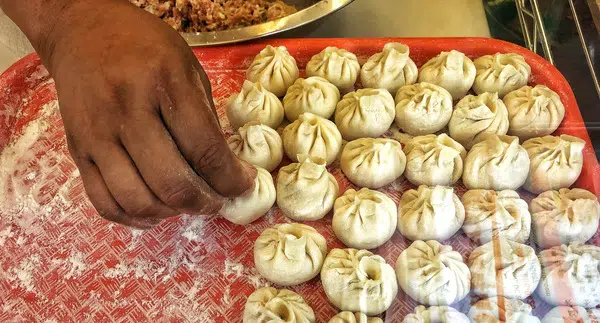
Wontons differ regionally in China, as you might expect since it’s such a huge country. Let’s take a look at some of the regional varieties. Cantonese wontons are usually filled with ground pork and shrimp and served in soup or with thin noodles.
Sichuan wontons are folded in a half-pentagon shape and served with chili oil and sesame paste. In Shanghai you can expect pork wontons in chicken soup. The ‘three delicacies wonton’ is a local favorite and that is filled with a combination of pork, shrimp and fish.
Jiangsu wontons are usually boiled and served with soup, omelet, seaweed, and greens. Finally there are Ningbo style wontons which are either steamed or served in soup. Again, pork and shrimp are the most popular filling ingredients.
Outside of China, wontons are a well-loved menu item and you can also find them frozen in the grocery store or make your own. They are usually fried as an appetizer or used in soup. The fried ones in the West come with some type of sauce, such as plum sauce, sweet and sour sauce or spicy mustard.
History of Wontons
Wontons date back more than 2000 years and they were originally made as sacrificial offerings. They were indistinguishable from dumplings but, over time, wontons came into their own and got their own name.
Originating from the North of China, these sealed, stuffed buns were known as ‘huidin’ meaning chaos, before the name changed to ‘wonton’ to match Chinese writing characters.
There was no shortage of wonton restaurants in various Chinese cities during the Song and Tang dynasties, packed with filling and cooked in soup. Wontons were a staple on midwinter day in some Chinese regions.
Medicinal Wontons
A well-respected Chinese doctor called Zhang Zhongjing used to fill wonton wrappers with medicinal ingredients and serve them to frostbite patients.
This snack was also described in ancient Chinese recipe books since you could add medicinal plants and disguise their flavor by adding herbs and spices.
Wontons can be described as a comfort food, just as chicken noodle soup is a comfort food in the West. In fact, wonton soup isn’t too different from its Western cousin, chicken soup!
So the next time you’re feeling in need of something warm and comforting, skip the chicken soup and opt for wonton soup instead.
Wrap Your Wontons Like a Pro
The easiest way to prepare homemade wontons is to use readymade, packaged wonton skins which you can get from most Asian markets. Once you have prepared your wonton filling, put a wonton skin in your hand and add a teaspoon of filling into the center.
Moisten the wonton edges with a little water on your fingertip then fold it in half and press to seal, pressing out any air which might be trapped in there with the filling.
Next you can wet the sides of the wonton where the sides meet and pinch them closed. Arrange the wontons on a parchment paper-lined sheet and cover the prepared ones with plastic wrap while you work on the rest, so they don’t dry out.
Remember there are various wonton shapes to choose from, so you might prefer to make triangles or another shape. Just make sure you squeeze out any excess air since you don’t want the little snacks to explode during cooking!
If you have leftover wonton wrappers, don’t throw them out. You can wrap some cheese in them and deep-fry for a kid-friendly snack. If you have leftover filling, roll it into mini meatballs and pan-fry. You can then freeze them for use in a future recipe.
Wontons FAQ
You can prepare them up to a day ahead and keep them refrigerated. Another option is freezing them but let them come to room temperature before cooking them else they won’t cook evenly.
Yes. After spraying the air fryer basket with some nonstick cooking spray, add the wontons and spritz some cooking spray on top. The wontons will take about 8 minutes to cook through at 375 degrees F. If you’re cooking a lot, you might need to cook them in more than one batch.
The great thing about wontons is you can assemble them and cook them without having to precook the filling first. This is true whether you are steaming, boiling or frying them.
